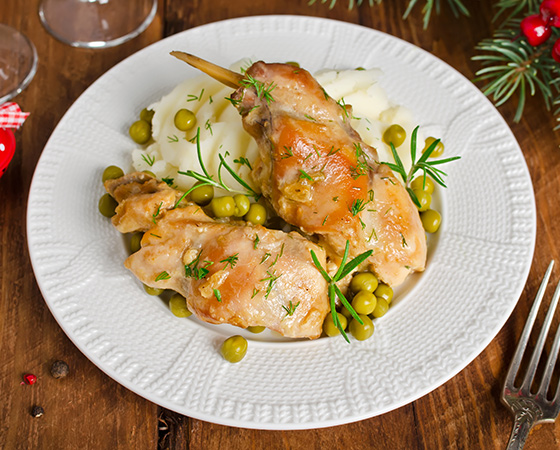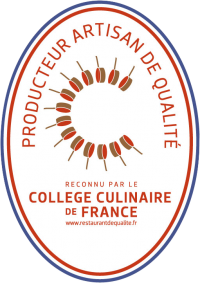
An unforgettable taste
Rabbit has always been a prominent meal in European gastronomy. The flesh of the rabbit is of similar taste and colour to that of poultry. It is also a lean meat, so its texture is soft, like chicken. It is easy to cook, and it can be prepared in many different ways. Finally, every piece is used: thighs, saddle, offal… and frame.
Additionally, rabbits contain fewer calories than beef, lamb, pork and even chicken! The rabbits’ thighs contain the fewest cholesterol level of all meats. It also contains the fewest sodium. It really is without flaws !
Cooking
For a long time, rabbit’s meat has been overcooked whereas the nutrients of its flesh get destroyed when it’s cooked too high, therefore lowering its nutritional value. It is advisable to favour water-less cooking methods (grilling or roasting) to preserve the main nutrients and minerals within this meat. Cooking at moderate temperature until the pink colour vanishes allows for good preservation of nutrients and, thus, helps enjoy all the nutritional benefits from rabbit’s flesh.

An amino acid and vitamin-rich meat
Eating Rex du Poitou’s meat provides a significant protein and amino acids intake (lysine, leucine and arginine) which are essential for the growth and development of the human body as it takes part in DNA formation.
9 amino acids are essential to human beings. Because our organisms do not synthesise these acids, it is therefore necessary to get some regularly through nutrition. The rabbits’ flesh contains all of these 9 amino acids which are essential for the growth and renewal of cells. Also, the quality of the rabbits’ proteins are kept after cooking. Furthermore, if rabbits’ meat is cooked in the oven it decreases its lipid rate to about 3% !
This flesh is rich in vitamin B3-rich, too. The latter facilitates energy production and also contributes to our growth and development by taking part in DNA formation.
The flesh also contains vitamin B6 which is involved in the fabrication of neurotransmitters and red blood cells as well as the building of nerve cells. They specifically facilitate the oxygen transport and foster an efficient immune system.
Rabbits are also vitamins B12, B5 and B2: all these vitamins are particularly useful for the proper functioning of the human body from the maintenance of cells to the development of tissues through hormones and red blood cells building.
Now, what about minerals and rabbits? Not only is the rabbits’ flesh a significant source of iron, copper and zinc, it is also particularly rich in phosphorous. Phosphorous is the second main mineral of our organisms, so it is essential for growth as well as for bones and teeth maintenance. Good to know: for 100g of rabbit’s flesh you get 200mg of phosphorous. Finally, rabbit’s flesh is also selenium-rich. The latter is a very sought-after antioxidant by sports’ enthusiasts because this mineral removes harmful peroxides coming from cellular breathing during exercise.
It is a perfect example of functional food that helps lower cholesterol, but also obesity and cardiovascular diseases.



